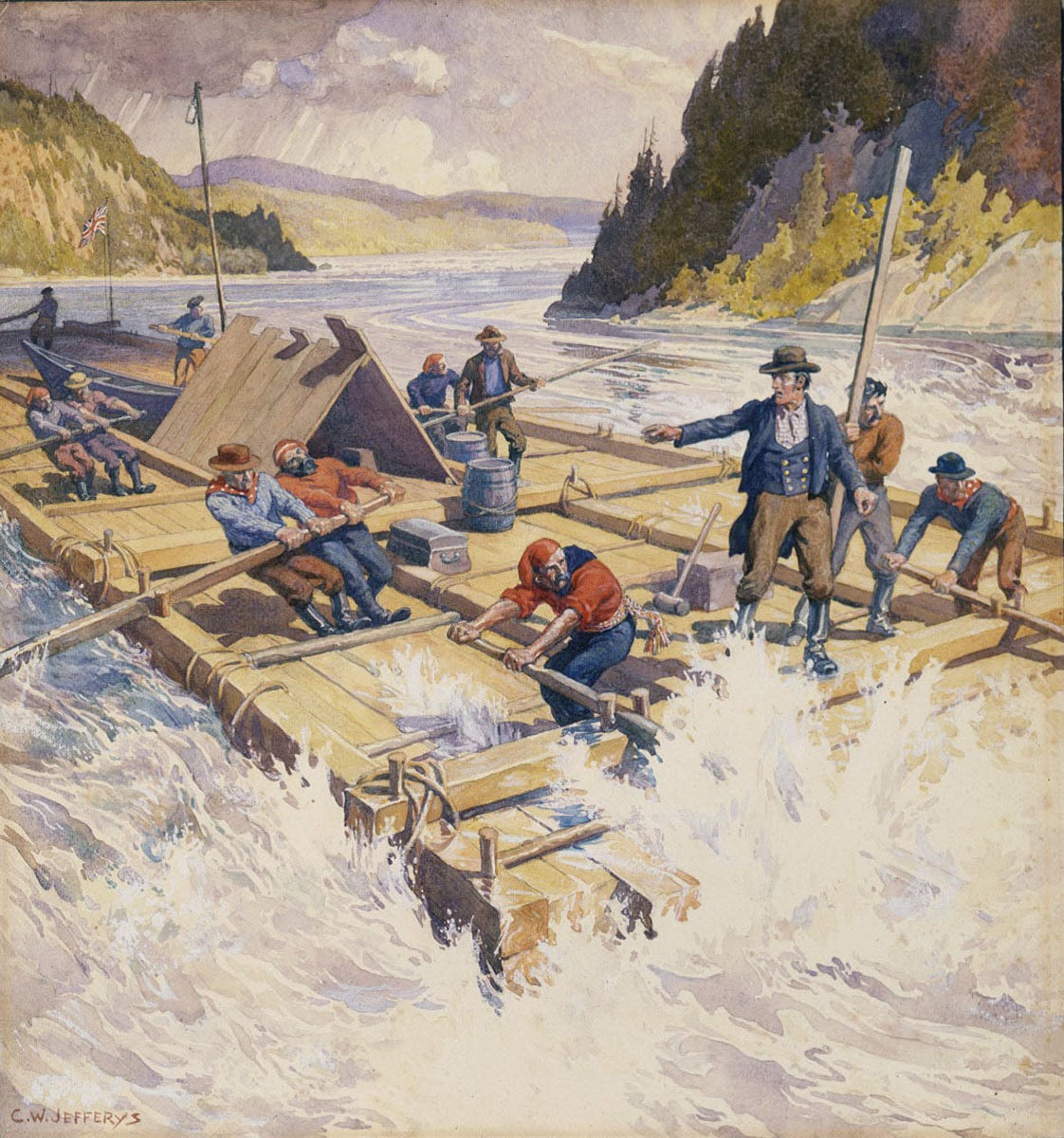Montreal, Toronto, Kingston and Quebec City all pre-date the 19th century, but Ottawa doesn’t.
Yet, Ottawa is the capital of Canada.
While the tale of how Ottawa became the capital will make a good Substack post one day, today is not about that story.
Today, I am delving into how one boat trip made Ottawa, which led to it becoming the capital of Canada.
Long before settlement came to the Ottawa region, it was covered in massive trees that covered the area. White and red pines, spruce, hemlock, oak and maple could all be found growing over the landscape.
Philemon Wright, who was living in Massachusetts, wanted to get away from the overpopulation there. He had first come to the Ottawa region in 1796, and again in 1798 and 1799.
After his third journey, he decided that it was the perfect place for a settlement. He found himself thousands of acres of good soil and timber, applied for the lands and swore allegiance to the Crown to receive his grant.
With his family and four other families, along with 33 labouring men, he left Massachusetts on Feb. 2, 1800 and with the help of an Algonquin scout, reached his new home where the Gatineau River meets the Ottawa on March 7, 1800.
Keeping the town, now called Wright’s Town, alive was not easy and by 1806 his savings of $20,000 were gone. To bring in extra money, he and the men started to cut timber.
Cutting the timber was easy, finding buyers for it was a bit more difficult.
On June 11, 1806, Philemon Wright, his son Tiberius, London Oxford, Martin Ebert, and John Turner, left nearby Wright’s Town with 700 logs and 6,000-barrel staves on a large raft on the Ottawa River.
It took 35 days to reach Montreal and the journey was anything but easy. To get beyond the Long Sault Rapids, once located east of Cornwall but now gone due to damming, the raft had to be broken into cribs and transported over land.
The 300-kilometre trip was fraught with danger. At one point, the raft came apart, adding two months of repairs to the trip.
The delay in reaching Quebec City caused Philemon to miss his contract.
But this was a blessing in disguise. The timber arrived in Quebec City at the same time Britain was looking to Canada to meet its timber needs because of the blockade of Europe by Napoleon.
After he returned home from his timber sale, Philemon put all his efforts behind the Ottawa Valley timber trade.
As Philemon made money, others sought to do the same and timber companies sprang up around the area. The importance of the Ottawa River was increasing with the growth of the timber trade.
With the timber trade growing, and following the War of 1812, the British government decided they needed to ensure there was safe passage between Montreal and Kingston in the event of another war. This necessitated a new route north along the Ottawa River, to the mouth of the Rideau River, southwest via canal to Kingston and to Lake Ontario. The last portion of this route would be the Rideau Canal.
The canal was built under the guidance of Lt. Colonel John By from 1826 to 1832, leading to the creation of Bytown that By laid out himself. Many of Ottawa’s most famous streets, Rideau, Sussex and Sparks, were laid out during this time.
When the canal was completed, Colonel By left the area seven days later with his family, never to see Bytown again.
Philemon Wright died three years later in 1839.
In 1855, Bytown was renamed Ottawa and in 1857, it was selected to be the new capital of the Province of Canada.
And it all started with a trip down a river with a lot of logs.





